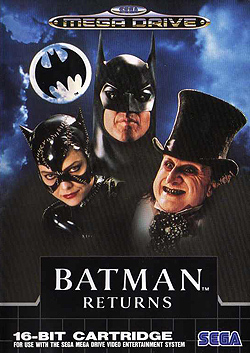
Batman Returns is the name of several video games for various platforms based on the 1992 film of the same name.
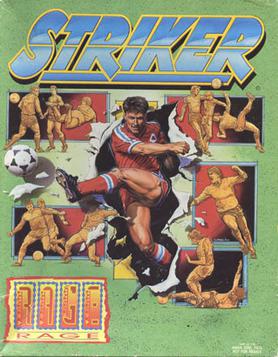
Striker is a soccer video game series first released by Rage Software in 1992.
Appaloosa Interactive was a corporation, founded in 1982 in Hungary, that produced video games, computer programs and television commercials during the 1980s and 1990s.

Krusty's Fun House is a puzzle video game based on the animated sitcom The Simpsons.
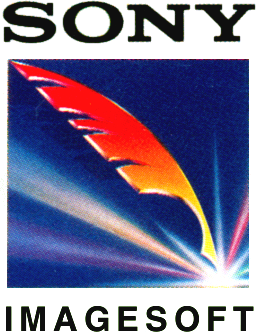
Sony Imagesoft Inc. was an American video game publisher that operated from 1989 to 1995 and was located in California. It was established in January 1989 in Los Angeles, California, as a subsidiary of the Japan-based CBS/Sony Group (CSG) and initially named CSG Imagesoft Inc. Their focus at the beginning was on marketing games exclusively for Nintendo consoles.
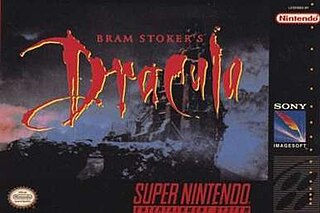
Bram Stoker's Dracula is a 1993 video game released for the Mega Drive/Genesis, Nintendo Entertainment System, Super NES, Game Boy, Master System, Sega CD, Game Gear, MS-DOS, and Amiga. It is based on the 1992 film Bram Stoker's Dracula which in turn is based on the 1897 novel Dracula by Bram Stoker. Most versions are platform games. The Sega CD and Amiga releases are beat 'em ups, and the MS-DOS version is a first-person shooter. The Amiga version was released in 1994 for North America and Europe. A CD-ROM version for MS-DOS compatible operating systems was released in 1995.
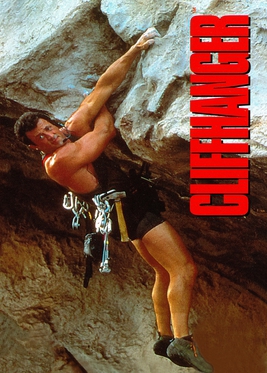
Cliffhanger is a beat 'em up, platform game that was released on October 17, 1993 based on the film of the same name.

Jungle Strike is a video game developed and published by Electronic Arts in 1993 for the Sega Genesis/Mega Drive. The game was later released on several other consoles such as the Super Nintendo Entertainment System (SNES), and an upgraded version was made for DOS computers. The Amiga conversion was the responsibility of Ocean Software while the SNES and PC DOS versions were that of Gremlin Interactive, and the portable console versions were of Black Pearl Software. It is the direct sequel to Desert Strike and is the second installment in the Strike series. The game is a helicopter-based shoot 'em up, mixing action and strategy. The plot concerns two villains intent on destroying Washington, D.C. The player must use the helicopter and occasionally other vehicles to thwart their plans.

PGA Tour Golf is a golf video game and the first in the PGA Tour game series. It was developed by Sterling Silver Software and released in 1990, for MS-DOS. It was initially published by Electronic Arts, which subsequently released versions of the game for Sega Genesis and Amiga in 1991, followed by a version for the SNES in 1992. By 1994, Tengen had published versions for Sega's Master System and Game Gear consoles. PGA Tour Golf received generally positive reviews for its realism, sound, and camera. Several critics considered the computer versions to be the best golf game available at the time of its release. It was followed by PGA Tour Golf II.

There have been several video games based on the 1991 film Hook. A side-scrolling platform game for the Nintendo Entertainment System (NES) and Game Boy was released in the United States in February 1992. Subsequent side-scrolling platform games were released for the Commodore 64 and the Super Nintendo Entertainment System (SNES), and an arcade beat ‘em up by Irem later in 1992, followed by versions for the Sega CD, Sega Genesis, and Sega's handheld Game Gear console in 1993.
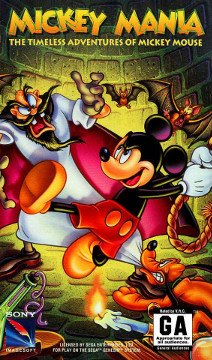
Mickey Mania: The Timeless Adventures of Mickey Mouse is a 1994 platform video game developed by Traveller's Tales and published by Sony Imagesoft for the Super NES, Sega Genesis, and Sega CD. In the game, the player controls Mickey Mouse, who must navigate through various side-scrolling levels, each designed and based on classical Mickey Mouse cartoons. The game was later released on the PlayStation in 1996 as Mickey's Wild Adventure in PAL regions by Sony Computer Entertainment, Sony Imagesoft's successor. A second game, Mickey Mania 2, was intended to be released but was cancelled due to Traveller's Tales focusing on other games.

Disney's The Jungle Book is a series of platform video games based on the 1967 Disney animated film of the same name. The game was released by Virgin Interactive Entertainment in 1994 for the Game Boy, Nintendo Entertainment System, Master System, Genesis/Mega Drive, Game Gear, Super Nintendo Entertainment System, and MS-DOS. While gameplay is the same on all versions, technological differences between the systems forced changes – in some case drastic – in level design, resulting in six fairly different versions of the 'same' game. This article is largely based upon the Genesis version.

RoboCop 3 is a video game based on the 1993 film of the same name. Amiga, Atari ST and DOS versions were developed by Digital Image Design beginning in September 1990, and published by Ocean Software in December 1991. The Digital Image Design version includes multiple gameplay styles. During 1992 and 1993, other versions consisting of side-scrolling platform gameplay were released for the Commodore 64, ZX Spectrum, NES, Super NES, Game Gear, Master System, and Sega Genesis.

The Lion King is a platform game based on Disney's 1994 animated film The Lion King. The game was developed by Westwood Studios and published by Virgin Interactive Entertainment for the Super NES and Genesis in 1994, and was ported to MS-DOS, Amiga, Game Gear, Master System, and Nintendo Entertainment System. The Amiga, Master System, and NES versions were only released in the PAL region. It is the final licensed NES game worldwide. The game follows Simba's journey from a young cub to the battle with his uncle Scar as an adult.
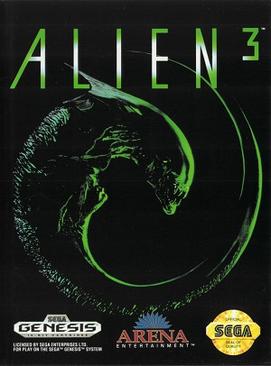
Alien 3 is a run and gun game based on the 1992 film of the same name. It was released for the Genesis and Amiga in 1992, then for the Commodore 64, Game Boy, Game Gear, Nintendo Entertainment System, Super Nintendo Entertainment System, and Master System.
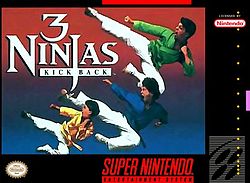
3 Ninjas Kick Back is a beat 'em up platform game for the Sega Genesis, Super Nintendo Entertainment System, and Sega CD. It was released in 1994 and was developed by Malibu Interactive. The Genesis version was published by Psygnosis while the SNES and Sega CD versions were published by Sony Imagesoft. The Sega CD version was released exclusively in a bundle pack with another game Hook and was not release separately.
Perfect Entertainment was an independent British computer game developer, which ceased production in 1999. It began in 1991 as Teeny Weeny Games headed by Angela Sutherland but changed names when merging exclusively with Gregg Barnett's Perfect 10 Productions, a company previously known as Beam Software (UK).
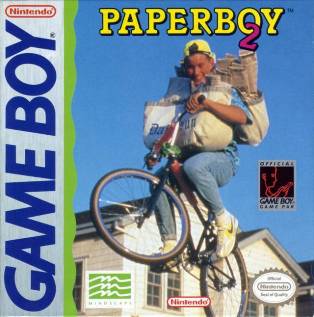
Paperboy 2 is an action video game, the sequel to the arcade video game Paperboy. It was released in 1991–1992 for Amiga, Amstrad CPC, Atari ST, MS-DOS, Game Boy, Game Gear, Genesis, Nintendo Entertainment System, Super NES, and ZX Spectrum. While Paperboy debuted in arcades and was subsequently ported to personal computers and consoles, the sequel was only released for home systems.

















